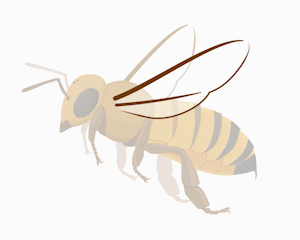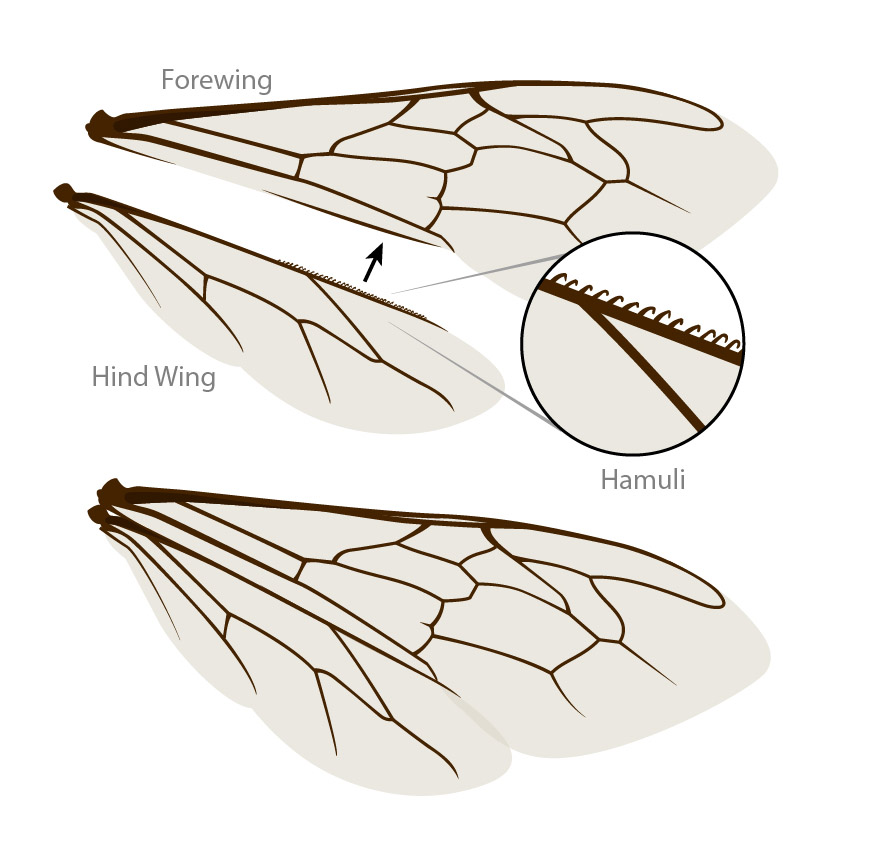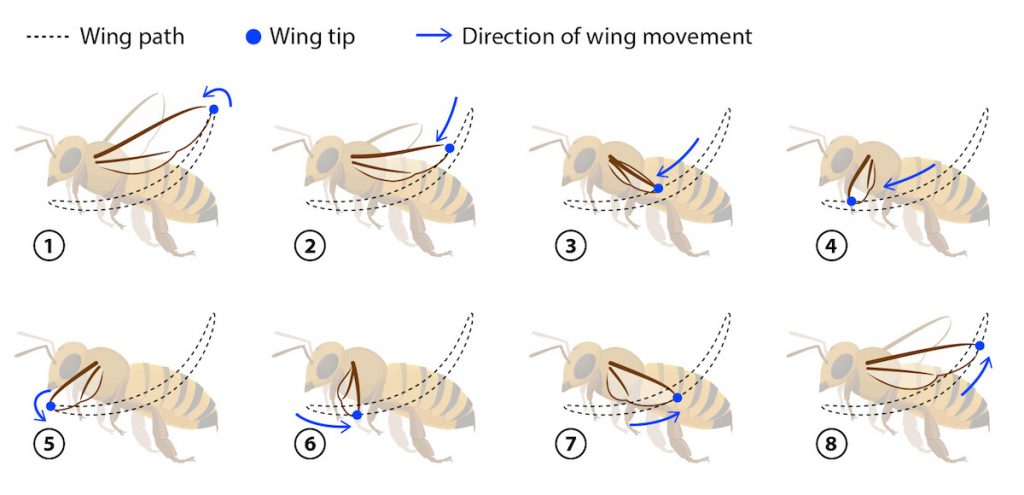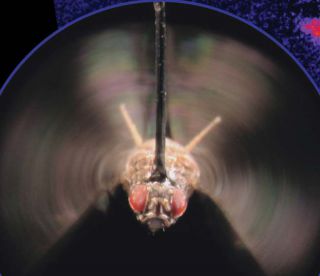
BPH 101 – THE BEE
How Do Honey Bees Fly
Good day friends, its nice meeting you again. I am sure you’ve been having fun, learning a lot about the bee. And once again I am Bee Royal. Let’s do a quick revision of our last lesson.
We discussed swarming in our previous post and I’m sure you now know how and why we swarm. And as a reminder, swarming is another means of reproduction for us. We will look at reproduction in bees one of these days. But today, we will be looking at how honey bees fly. Do you know we have to fly to be able to swarm? Surely we do. Another surprising fact is the way or method at which we fly which had been a secret to man that has just been revealed recently by Scientists. It was a hard nut to crack because it was believed that we bees shouldn’t be able to fly.
In a movie titled “BEE” this was the opening words to the film: “According to all known laws of aviation, there shouldn’t be any way by which a bee should be flying. Its wings are too small to get its fat little body off the ground. The bee, of course, flies anyways. Because bees don’t care what humans think is impossible.” But this statement has been scientifically proven wrong.
In this lesson, you are going to learn how we honey bees fly.

There has been a popular misconception that bees shouldn’t be flying. In reality, this is not true, because they can and do fly all the time. The myth dates back to the 1930s, when the French entomologist, August Magnan, noted that a bee’s flight should be impossible, because of the haphazard way their wings flapped around. And if bees flew like airplanes, he would be correct. Although the issue is not as mysterious as to how the universe and life on earth came into existence, the physics of bee flight has left scientists puzzled for more than 70 years. In 1934, French entomologist, Antoine Magnan, with his assistant André Sainte-Lague calculated that bee flight was aerodynamically impossible. The haphazard flapping of their wings simply shouldn’t keep the robust bugs aloft. And yet, bees most certainly fly, and the difference in opinion between prediction and reality has been used for decades to irk scientists and engineers about their inability to explain this concept.
Scientists used to think that bee’s wings were stiff like that of an airplane, but their wings are fairly small even for their body size. And for many years scientist couldn’t explain this, this was because according to physics; due to low speeds and the high amount of drag a bee gets when its flaps its wings, it’s impossible for them to fly. Mathematics calculation showed that their wings could not provide enough lift to get their bodies off the ground, but that didn’t stop them.
The secret of honeybee flight was understanding bee wings as the key to figuring out how bees could fly. Bees have two wings on each side of their bodies, which are held together with comb-like teeth called hamuli. These teeth allow the two wings to act as one large surface and help the bee create greater lift when flying. Finally, it was discovered to be the unusual combination of short, rough wing strokes, a rapid rotation of the wing as it twists, and a very fast wing-beat frequency. Bee wings make short, quick sweeping motions front and back. This motion creates enough lift to make it possible for bees to fly. Bees have two sets of wings, one larger outer set (fore wing) and one smaller, inner set (hind wing). In each set of bee wings, the large and small wing is connected with hamuli, which are kinds of like hooked comb teeth.

Well, in other to find out how the bees fly in actual sense, different experiments was carried out by different scientists, biologists, and even mathematicians;
These biologists found out that: For the honey bee to beat its wings, it has muscles that cause its thorax to squeeze in two directions: both up-and-down, and left-and-right. The honey bee alternates these rhythmic thorax pulsations, just like how we breathe, but instead of pulling in air, these pulsations cause the bee’s wings to beat back and forth. This also allows honey bees to beat their wings very quickly and fly. Honey bees can beat their wings over 230 times per second. While beating these wings they twist and rotate at this same time. An inefficient way for an insect to fly, you will say.

The back and forth movement of bee wings almost draw a crooked smile in the air. A short wing beat like this, when mixed with the twist and rotation of bee wings, makes it possible for honey bees to fly.
Mathematicians found out a new mathematical analysis that has put together a complete picture of how bees manage to fly. By creating three mathematical models each with a different mechanism for generating lift and then comparing the models to the original experiments, they were able to work out how the creatures stay in the air. “We found that LEVs mean the wing can fly at a much higher angle of attack without stopping,” said Nabawy.
The swirls of air at the edge of a bee’s wing enable the insect to angle its wing more sharply towards the sky, improving the flow of air over the wing. It’s this higher wing angle that gives bees enough lift to fly.
If a bee was mid-flight and the LEVs just stopped spinning, the bee would stall. Meaning that the pressure difference between the top and the underside of the wing responsible for lift would drop. They would then fall out of the air and bounce along the floor before finally skidding to a halt with a sore behind.
“By testing these mathematical ideas against measured data from real wings, the authors have shown convincingly that the best explanation is that the leading-edge vortex prevents a stall,” said Richard Bomphrey at Royal Veterinary College.

The scientists analyzed pictures from hours of filming bees and mimicked the movements using robots with sensors for measuring forces.
Turns out bee flight mechanisms are more exotic than thought. “The honeybees have a rapid wing beat,” Altshuler told LiveScience. “Being relatively large insects, bees would be expected to beat their wings rather slowly, and to sweep them across the same wide arc as other flying bugs (whose wings cover nearly half a circle). They do neither. Their wings beat over a short arc of about 90 degrees, but ridiculously fast, at around 230 beats per second. Fruit flies, in comparison, are 80 times smaller than honeybees, but flap their wings only 200 times a second.
This was a surprise because as insects get smaller, their aerodynamic performance decreases and to compensate, they tend to flap their wings faster.
“And this was just for hovering,” Altshuler said of the bees. “They also have to transfer pollen and nectar and carry large loads, sometimes as much as their body mass, for the rest of the colony.” To understand how bees carry such heavy cargo, the researchers forced the bees to fly in a small chamber filled with a mixture of oxygen and helium that is less dense than regular air. This made the bees to work harder to stay overhead and gave the scientists a chance to observe their compensation mechanisms for the additional toil.
The bees made up for the extra work by stretching out their wing stroke amplitude but did not adjust wingbeat frequency. When bees want to generate more power–for example, when they are carting around a load of nectar or pollen–they increase the arc of their wing strokes but keep flapping at the same rate. That is also odd. Dickinson said, “it would be much more aerodynamically efficient if they regulated not how far they flap their wings but how fast”.
“They work like racing cars,” Altshuler said. “Racing cars can reach higher revolutions per minute but enable the driver to go faster in a higher gear. But like honeybees, they are inefficient.”
“These animals are exploiting some of the most exotic flight mechanisms that are available to insects,” said Dickinson
References
- https://www.newscientist.com/article/dn8382-secrets-of-bee-flight-revealed/
- https://www.newscientist.com/article/2141802-maths-explains-how-bees-can-stay-airborne-with-such-tiny-wings/
- https://www.livescience.com/528-scientists-finally-figure-bees-fly.html
- https://www.businessinsider.com/bees-cant-fly-scientifically-incorrect-2017-12?IR=T
- https://www.forbes.com/sites/quora/2018/05/11/how-do-bees-fly/#abd910854640
- https://askabiologist.asu.edu/how-do-bees-fly
- https://www.caltech.edu/about/news/deciphering-mystery-bee-flight-1075